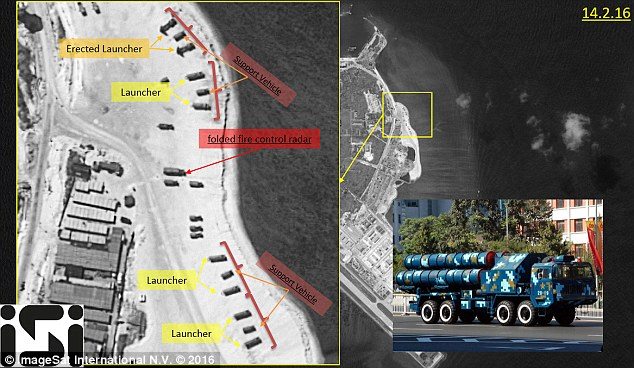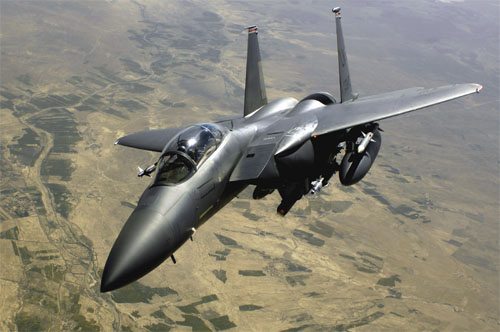A cruise missile is a guided missile which uses a lifting wing and most often a jet propulsion system to allow sustained flight. Cruise missiles are, in essence, unmanned aircraft. They are generally designed to carry a large conventional or nuclear warhead many hundreds of miles with excellent accuracy. In 2001, modern cruise missiles normally travel at sub-sonic speeds, are self-navigating, and fly low in order to avoid radar detection.
A cruise missile is a guided missile which uses a lifting wing and most often a jet propulsion system to allow sustained flight. Cruise missiles are, in essence, unmanned aircraft. They are generally designed to carry a large conventional or nuclear warhead many hundreds of miles with excellent accuracy. In 2001, modern cruise missiles normally travel at sub-sonic speeds, are self-navigating, and fly low in order to avoid radar detection.
Nuclear and Convenational Versions
The US has 460 AGM-129 Advanced Cruise Missiles (ACMs) with a W80 nuclear warhead for B-52 Stratofortress (B-52H) external carriage. Also there are ca. 350 sea-launched cruise missiles with the same nuclear warhead. They all remain in storage.
(As of 2001) the BGM-109 Tomahawk missile model has become a significant part of the US naval arsenal. It gives ships and submarines an extremely accurate, long-range, conventional land attack weapon. Each costs about $1,900,000 USD. The US Air Force deploys an air launched cruise missile, the AGM-86. It can be launched from bombers like the B-52 Stratofortress. Both the Tomahawk and the AGM-86 were used extensively during Operation Desert Storm. The British Royal Navy (RN) also operates cruise missiles, specifically the Tomahawk, used by the RN’s nuclear submarine fleet. Conventional warhead versions were first fired in combat by the RN in 1999, during the Kosovo War.
Background Info and History
Cruise missiles were first developed by Nazi Germany during World War II. The V-1 (introduced in 1944) was the first weapon to use the classic cruise missile layout of a bomb-like fuselage with short wings and a dorsally mounted engine, along with a simple inertial guidance system. The V-1 was propelled by a crude pulse-jet engine, the sound of which gave the V-1 its nickname of "buzzbomb". However, the V-1 did not have the level of accuracy of a modern tactical cruise missile. These early weapons are often referred to as flying bombs. Japan, in an effort to gain a tactical advantage against the allied forces resorted to kamikaze aircraft, another early predecessor to the super-accurate cruise missiles of today.
During the Cold War, both the United States and the Soviet Union experimented further with the concept, deploying early cruise missiles from submarines and aircraft. The Soviet Union was especially fond of large cruise missiles. The United States had a program to develop a nuclear-powered cruise missile, Project Pluto. Although the concept was proven sound, none were ever test-launched. While ballistic missiles were the weapons of choice for land targets, heavy nuclear and conventional tipped cruise missiles were seen by the USSR as a primary weapon to destroy US carrier battle groups. Large submarines (e.g. Echo and Oscar classes) were developed to carry these weapons and shadow US battle groups at sea, and large bombers (e.g. Backfire, Bear, and Blackjack models) were equipped with the weapons in their air launched cruise missile (ALCM) configuration.
The DIY Cruise Missile
There was also a project by a New Zealander named Bruce Simpson to design and test fly a home-built cruise missile. It was funded by private investors, and it was planned to be built for under $5,000, which is remarkably cheaper than the approximate 1.9 million USD used to build the Tomahawk.
Simpson intended to use readily available components to build a basic missile system. His extensive experience in the building of radio controlled model aircraft would be employed in airframe and control surface design. A commercially available GPS unit linked to a standard PLC unit running custom developed software would be used for guidance and control. Propulsion would come from a pulse jet engine of his own design.
Payload was intended to be in the region of 10 – 15 kilograms. Not enough to do significant damage if loaded with conventional explosives but sufficient to be used as a dispersal system for biological/chemical agents.
In late 2003, however, Simpson ran into tax difficulties, and ended the project. He later claimed that his tax problems were the result of a government attempt to shut him down.
Related links









